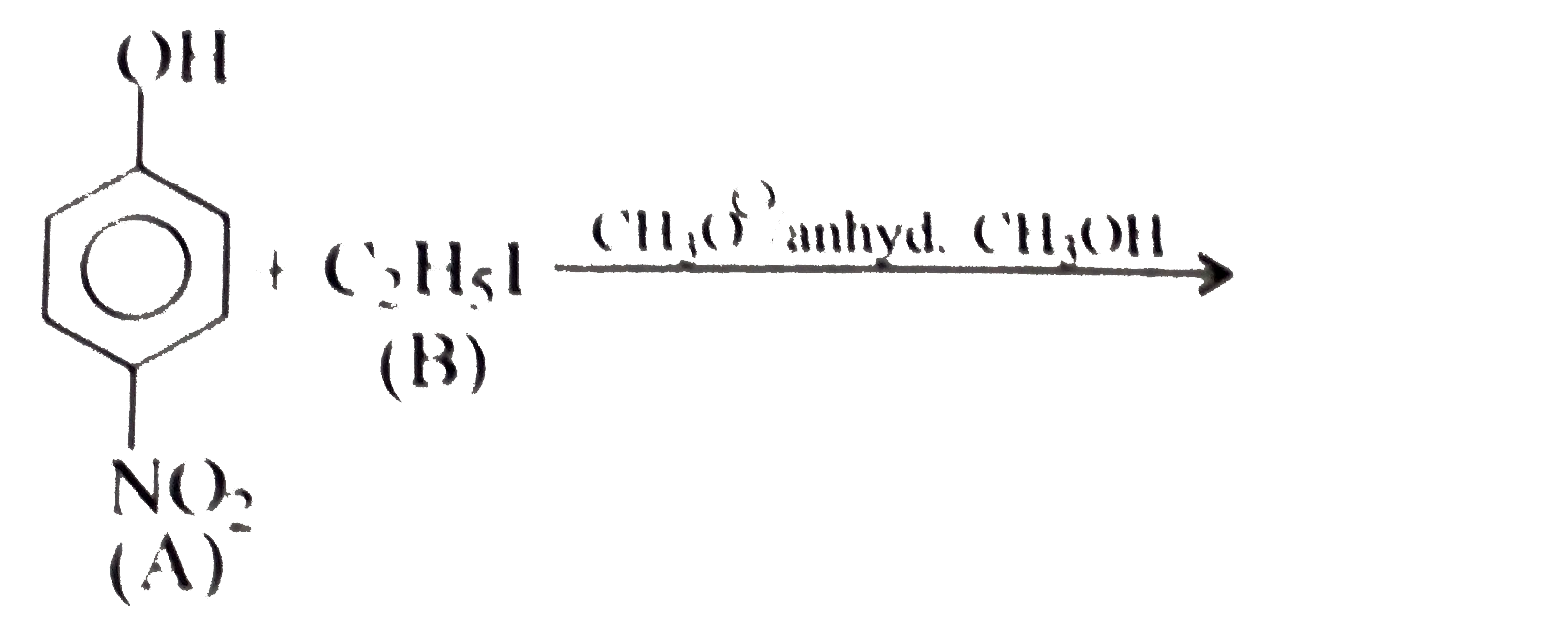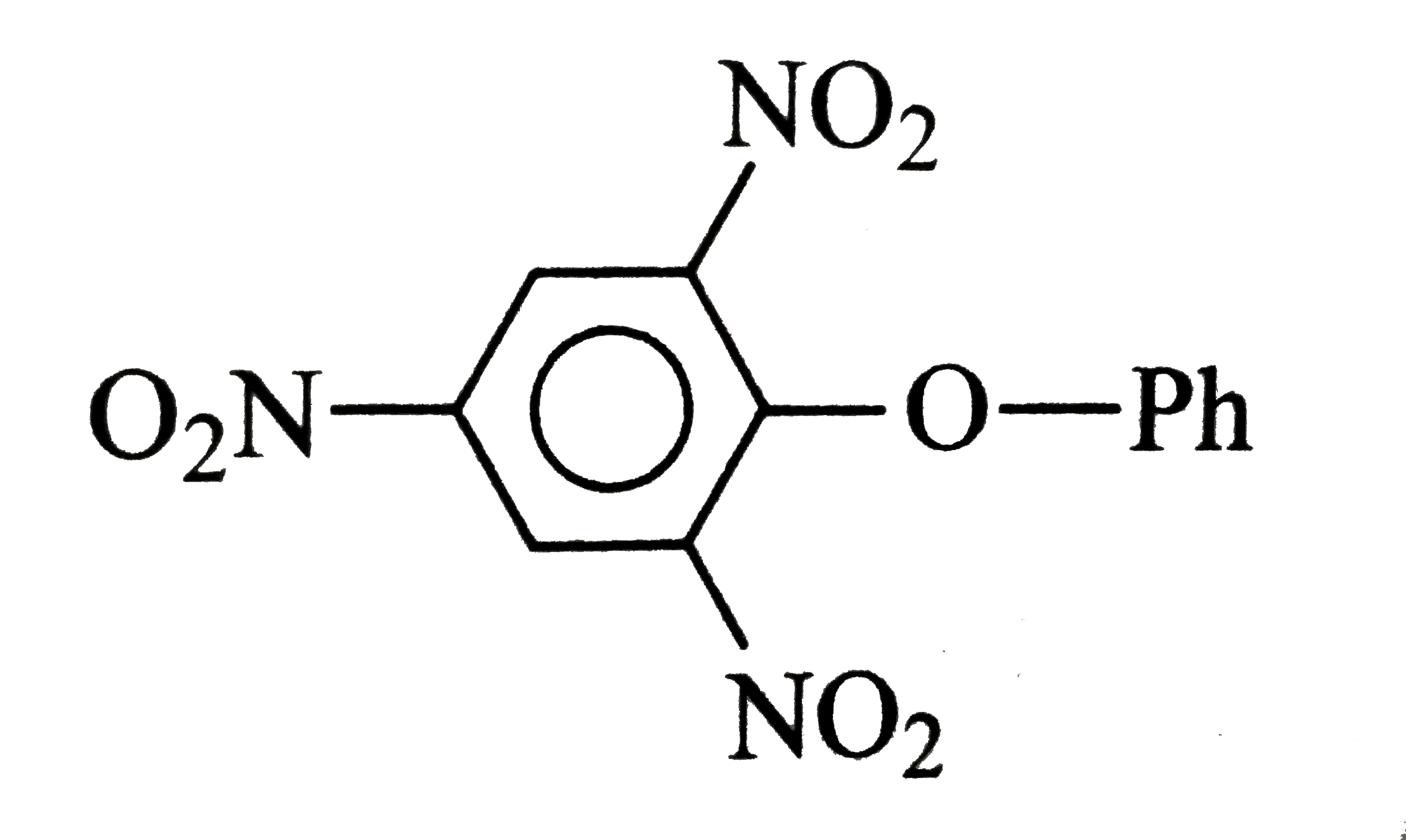C2H5Br can be converted into C2H5−O−C2H5 by:
reacting by C2H5ONa
heating with moist Ag2O
heating with dry Ag2O
treating with C2H5MgBr
The correct Answer is:A, C
To convert C2H5Br (ethyl bromide) into C2H5−O−C2H5 (diethyl ether), we can follow these steps:
Step 1: Identify the Reaction Type
We are dealing with the conversion of an alkyl halide (ethyl bromide) into an ether. This typically involves a nucleophilic substitution reaction where the halide is replaced by an alkoxide ion.
Step 2: Choose the Nucleophile
In this case, the nucleophile will be the ethoxide ion (C2H5O−). This can be generated from sodium ethoxide (C2H5ONa).
Step 3: Reaction Mechanism
The reaction can be summarized as follows:
1. Ethyl bromide (C2H5Br) reacts with sodium ethoxide (C2H5ONa).
2. The bromine atom is a good leaving group and will leave, forming a carbocation.
3. The ethoxide ion will attack the carbocation, resulting in the formation of diethyl ether.
Step 4: Write the Balanced Equation
The balanced chemical equation for the reaction is:
C2H5Br+C2H5ONa→C2H5−O−C2H5+NaBr
Step 5: Conclusion
Thus, C2H5Br can be converted into C2H5−O−C2H5 using sodium ethoxide (C2H5ONa).
Summary of Possible Reagents
1. Option A: Sodium ethoxide (C2H5ONa) - This is a suitable reagent for the conversion.
2. Option C: Dry silver oxide (Ag2O) - This can also facilitate the formation of ether from alkyl halides.
Final Answer
The conversion of C2H5Br to C2H5−O−C2H5 can be achieved using:
- Sodium ethoxide (C2H5ONa) or
- Dry silver oxide (Ag2O).
---
We are dealing with the conversion of an alkyl halide (ethyl bromide) into an ether. This typically involves a nucleophilic substitution reaction where the halide is replaced by an alkoxide ion.
In this case, the nucleophile will be the ethoxide ion (C2H5O−). This can be generated from sodium ethoxide (C2H5ONa).
The reaction can be summarized as follows:
1. Ethyl bromide (C2H5Br) reacts with sodium ethoxide (C2H5ONa).
2. The bromine atom is a good leaving group and will leave, forming a carbocation.
3. The ethoxide ion will attack the carbocation, resulting in the formation of diethyl ether.
The balanced chemical equation for the reaction is:
C2H5Br+C2H5ONa→C2H5−O−C2H5+NaBr
Thus, C2H5Br can be converted into C2H5−O−C2H5 using sodium ethoxide (C2H5ONa).
1. Option A: Sodium ethoxide (C2H5ONa) - This is a suitable reagent for the conversion.
2. Option C: Dry silver oxide (Ag2O) - This can also facilitate the formation of ether from alkyl halides.
The conversion of C2H5Br to C2H5−O−C2H5 can be achieved using:
- Sodium ethoxide (C2H5ONa) or
- Dry silver oxide (Ag2O).
Topper's Solved these Questions
- ALCOHOLS AND ETHERSBOOK - HIMANSHU PANDEYCHAPTER - ALCOHOLS AND ETHERSEXERCISE - More Than One Correct (Q.26 To Q.50)
25 Videos
- ALCOHOLS AND ETHERSBOOK - HIMANSHU PANDEYCHAPTER - ALCOHOLS AND ETHERSEXERCISE - Linked Comprehension Type
24 Videos
- ALCOHOLS AND ETHERSBOOK - HIMANSHU PANDEYCHAPTER - ALCOHOLS AND ETHERSEXERCISE - Level 2 (Q.126 To Q.132)
7 Videos
- AMINESBOOK - HIMANSHU PANDEYCHAPTER - AMINESEXERCISE - Subjective Type Problems
5 Videos
Similar Questions
Knowledge Check
C6H5CONHCH3 can be converted into C6H5CH2NHCH3 by .
ANaBH4BH2−Pd/CCLIAlH4DZn−Hg/HClC6H5CONHCH3 can be converted into C6H5CH2NHCH3 by .
ANaBH4BH2−Pd/CCLiAlH4DZn−Hg/HClC6H5CONHCH3 can be converted into C6H5CH2NHCH3 by .
ANaBH4BH2−Pd/CCLiAIH4DZn−Hg/HCI
Convert C6H5COOH TO C6H5NH2.
View SolutionConvert C6H6toC6H5D.
View SolutionSelect the correct answer:
a.
i. PhOC2H5 ii. Ph−−−O−−−Ph
iii. PhI iv. C2H5OC2H5
b.
i. p−−NO2−−C6H4−−OC2H5
ii. p−−NO2−−C6H4−−O−−C6H4−−NO2−−p
iii. C2H5−−O−−CH3
iv. p−−NO2−−C6H5−−I.
c.
i. C6H5CH2−−O−−Ph
ii. C6H5CH2−−O−−C2H5
iii. Ph−−O−−C2H5
iv. C2H5−−O−−C2H5
d.
i. C6H5CH2−−O−−C2H5
ii. C6H5−−CH2−−O−−Ph
iii. Ph−−O−−C2H5
iv. C2H5−−O−−C2H5 .
e.
i.
ii.
iii.
iv.
f.
i.
ii.
iii.
View SolutionThe IUPAC name of C2H5OC2H5
View SolutionCh3−O−C3H7andC2H5−O−C2H5 exhibit which type of isomerism
View Solution

